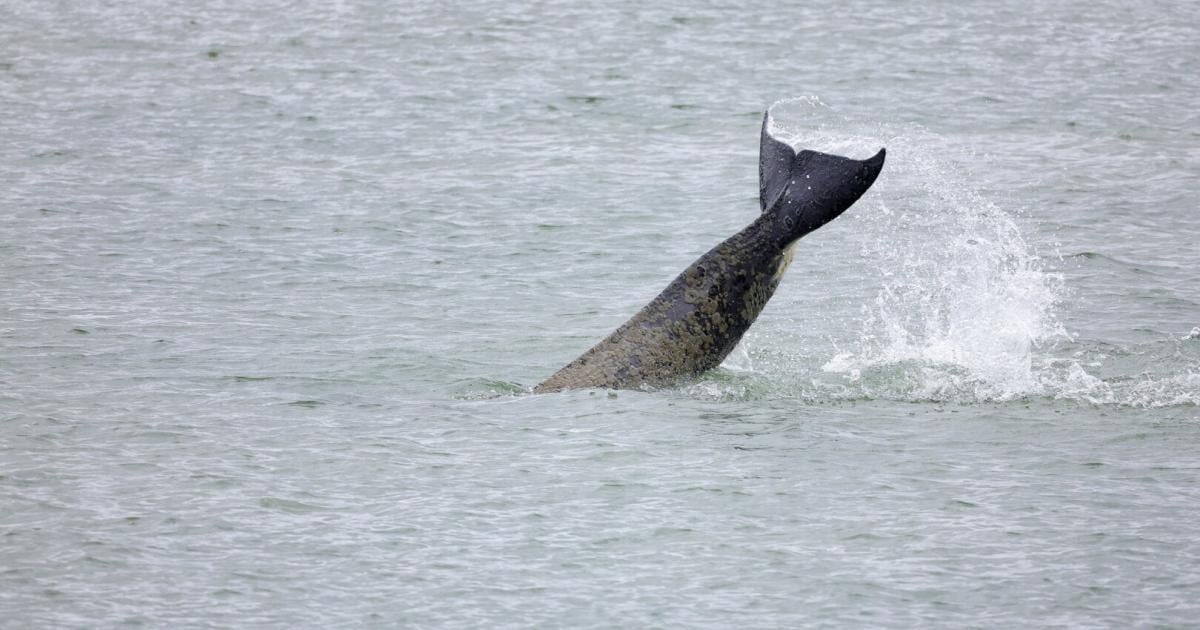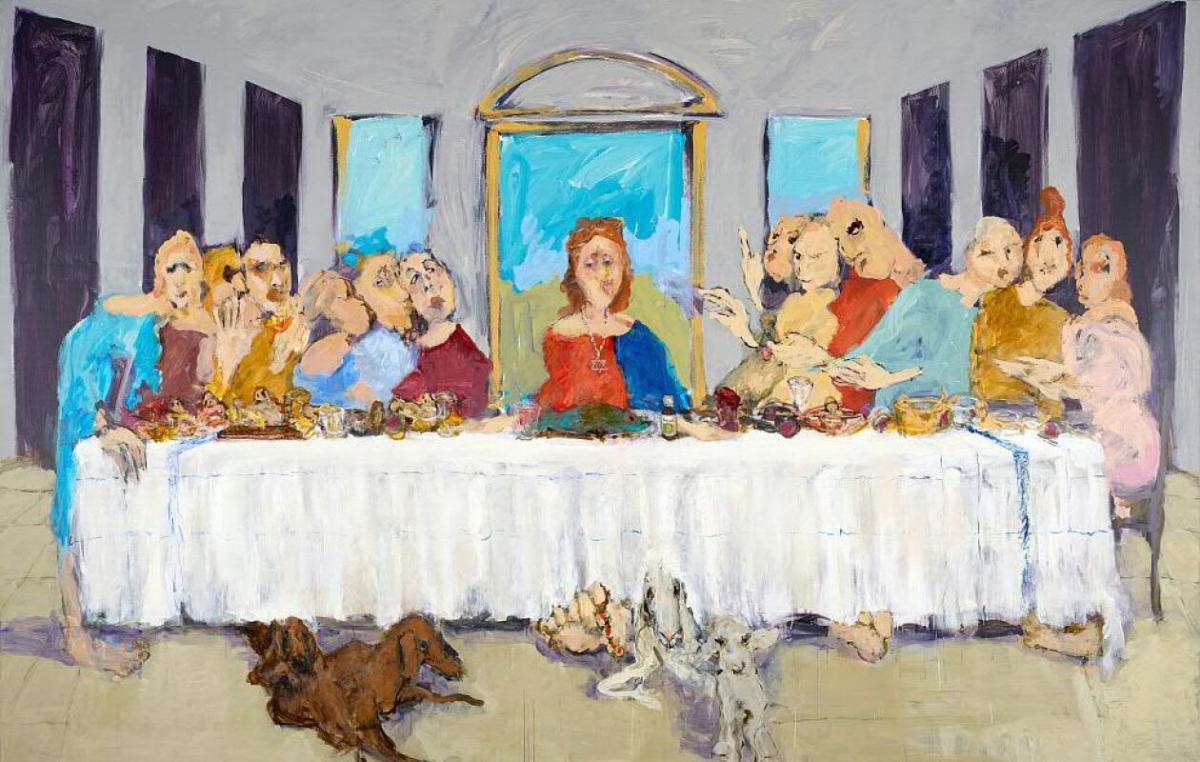A colorful crowd of people and animals – some of them frightening hybrids – a shifting perspective and a cruelty spiced with a touch of irony: this could be a short summary of many of Eva Beresin's paintings, which can be seen at Albertina from May 1st. The house displays some 30 recently created works by the artist, who was born in Hungary in 1955 and has lived in Vienna since 1976 — and whose work is closely intertwined with her tragic family history.
Beresin was the second artist, along with Martha Jungwirth, to have been overlooked here for too long, Albertina President Klaus Albrecht Schröder said Monday during a press tour for the exhibition titled “Thick Air.” This is difficult to understand because it represents an attitude that is “more relevant than ever”: “the beautiful meets the terrible and the rude.” Very recent works are on display, all dating back to the last three to four years and which actually contain the tragic autobiographical discovery that the Budapest native had to make.
In 2007, Beresin found her mother's memoirs, which she wrote in 1945 when she survived the Holocaust. This matter was never discussed in the family. Only at this late date did the artist learn that several members of her family had died in National Socialist concentration camps. “This led to what could be described as a return of the repressed,” explained Angela Stiff, a curator at the museum. Berezin faces horror and shock. Since then, there has been an intensity to her work that has not been lost to this day.
There is also an appreciation value in previous works, but it has been greatly reduced. “Experiencing terrible things made the work easier,” Steve said. Beresin himself explained this turning point as follows: “I learned to paint in a communist system, where many rules had to be followed. After this knowledge, I suddenly felt free to be able to show everything. I didn't want to anymore.” I stop myself from doing so – and still technically in terms of content it happens from day to day.
For Beresin, this newfound freedom is expressed in the omnipresence of the unconscious. In large, colorful, picturesque graphic formats, you encounter a disturbing carnival world of grotesque characters and bizarre fantasy creatures, medieval-like cruelty and everyday banality, and tons of (stuffed) animals with human features and humanoid creatures with animalistic behaviour. Conventions of representation break, points of view slip or dissolve.
The urgency inherent in these works can be seen in the color applied very explicitly. Beresin does not even try to hide the numerous lines that appear on the canvas. In fact, the painter's style is almost intoxicating. Steve described his method of working as “quick sketching”. The artist herself reported on a visit to a camp where relatives died: “After that, I was drawing day and night for a year and a half. It was like an engine.” More recently, some sculptures have been added that make it look as if one figure or another has removed itself from the paintings.
With all this horror, the irony cannot be overlooked. Beresin said that only through exaggerated means of humor can what has been experienced be addressed. This applies at least to the artist's self-portrayal, which – although somewhat conservative in her everyday appearance – is often shown naked and embellished with red lips and red nails, and as such sometimes occupies not only the central position on the canvas, but also as an image . A typical version of one trash can is shown. The eagle sitting next to him is already lurking.
The fact that Beresin's work not only contains autobiographical references, but is also inspired by the “collective image memory” (Stief), which can be drawn from magazines as well as icons from art history, can be seen in the “Seven Spiritual Laws of Art.” “Success” – a frank reinterpretation of Da Vinci's painting The Last Supper. This picture is also a good example of how Beresin's practical jokes often require close examination in order to be discovered. The artist not only places a plate of fish in front of Jesus, but also a small glass flask. If you get close enough, you can decipher “Iberogast” on the label, not out of place for an exhibition that's not always easy to fully comprehend.
(Service – “Eva Beresin. Thick Air” at Albertina, from May 1 to September 15, exhibition catalog in German and English: €46; www.albertina.at)

“Travel aficionado. Certified problem solver. Pop culture guru. Typical writer. Entrepreneur. Coffee trailblazer.”







More Stories
Opening the festival weeks with “Art, Politics and Activism”
Christina Logner's new boyfriend is raving about her!
King Charles has revealed his first official photo since his coronation